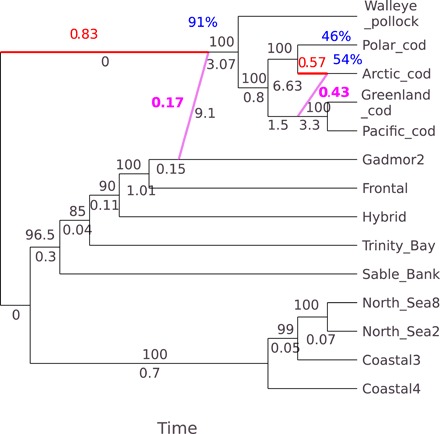Fig. 4. Best phylogenetic network and bootstrap support for linkage group LG01.

The inheritance probabilities of the major (γ in red) and minor edges (1 − γ in magenta) represent the proportion of genes that a hybrid inherits from its two parents [using SNaQ method of (32)]. The percentage bootstrap support (blue), from 200 bootstrap replicates with 10 runs per replicate, for the entire reticulation is given at the hybrid node, which represents the bootstrap support for the same hybrid node derived from the same sister clades. The number below an edge (in black) is the length of the edge in coalescent units, and the number above an edge (also in black) is the bootstrap support. The taxon names on the networks are Arctic cod, Polar cod, walleye pollock, Pacific cod, and Greenland cod, and locality names for Atlantic cod are Trinity Bay (Newfoundland), Sable Bank (Nova Scotia), coastal ecotype from North Sea2, coastal ecotype from North Sea8, coastal ecotype from Iceland Coastal3, a Pan I AB fish from Iceland termed Hybrid, Frontal (a composite of frontal ecotype from Iceland), and Coastal4 a composite of coastal ecotypes from Iceland (see Materials and Methods for the description of composites). Gadmor2 is the new alignment (49) of the reference genome. This labeling applies to all networks presented in figs. S2 and S3. LG01 is a linkage group known to harbor two adjacent inversions (23) that are associated with ecotypic variation within Atlantic cod. The major edge tree for LG01 is rooted on Arctic cod (Fig. 5). However, because of root mismatch, the network was rooted on an edge leading to Arctic cod.
